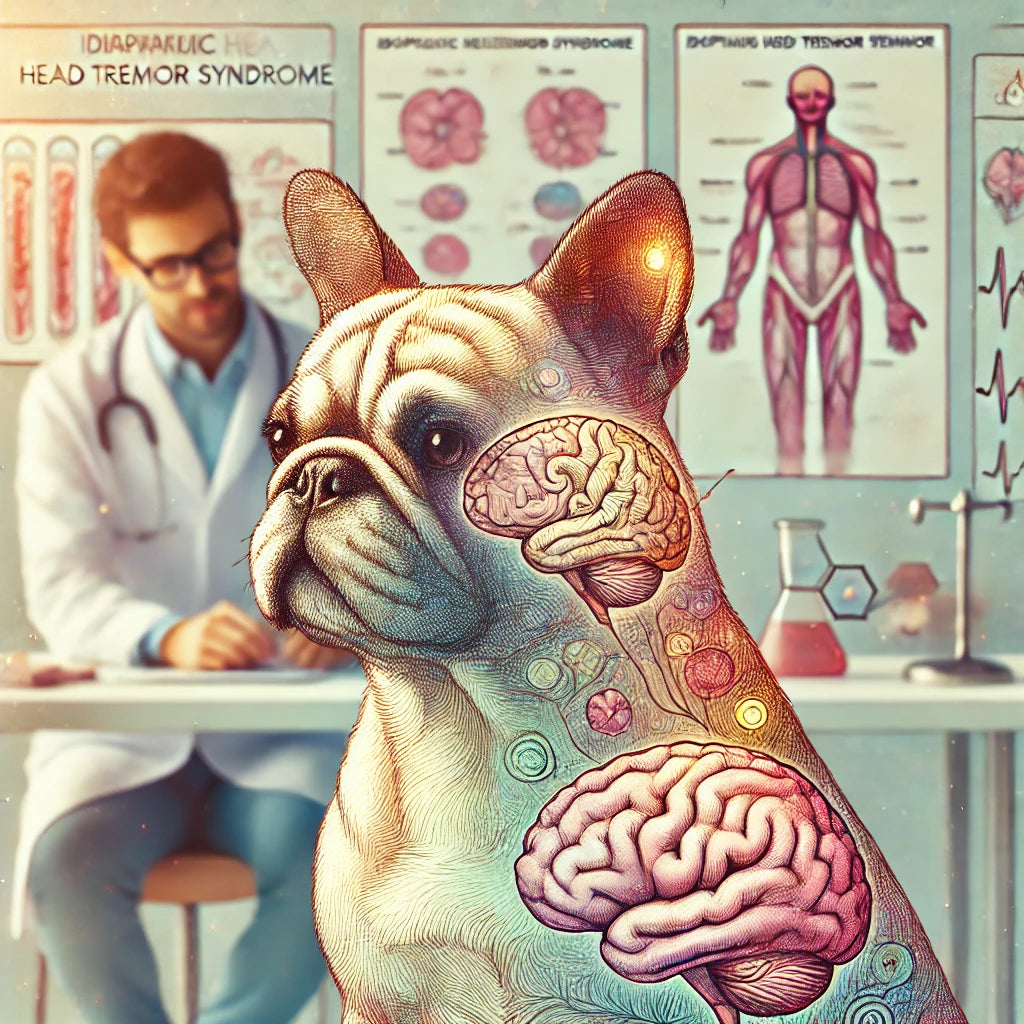
Shaky Head Syndrome (TTS) in Brachycephalic Dogs
Mariasole FerranteShare
Shaky Head Syndrome (TTS), also known as Idiopathic Head Tremor Syndrome , is an episodic disorder that predominantly affects brachycephalic breeds such as English Bulldogs, Pugs, and Boxers. Although the condition can be frightening for owners, it is not considered life-threatening.
Symptoms and Manifestations
Episodes of STT manifest with:
- Rhythmic tremors of the head, in a vertical direction (like a "yes") or horizontal direction (like a "no").
- Spontaneous onset, without any apparent cause.
- Lasts from a few seconds to a few minutes.
- Consciousness preserved: the dog remains alert and responsive.
These tremors can occur either during rest or while the dog is awake.
Cause
The exact causes are still unknown, but a genetic basis is suspected. In particular, a higher incidence has been observed in some brachycephalic breeds, suggesting a hereditary predisposition. The episodes do not appear to be linked to pain or serious neurological problems.
Diagnosis
The diagnosis is clinical and is based on the exclusion of other neurological pathologies, such as:
- Epilepsy.
- Brain injuries.
- Metabolic disorders.
To confirm the diagnosis, a veterinarian may order blood tests, an MRI scan, or a CT scan.
Treatment and Management
There is no definitive cure for TTS. However, some strategies can help mitigate the problem:
1. Distraction: Offering food or getting the dog's attention during an episode can stop the tremors.
2. Change position: Changing the position of the dog's head sometimes relieves the tremor.
3. Exclusion from breeding: To prevent possible hereditary transmission, it is advisable not to breed affected subjects.
Although TTS is benign, it is important to monitor your dog and consult a veterinarian to rule out other conditions.
Sources and Scientific Studies
Here is a list of helpful and reliable sources for learning more about TSS (Shaky Head Syndrome) and other issues related to brachycephalic dogs:
1. Idiopathic Head Tremor Syndrome in Dogs : An article exploring the causes, symptoms, and treatments of this syndrome. Available at Canine Epileptoid Cramping Syndrome and Wikipedia
2. Health and Welfare of Brachycephalic (Flat-faced) Dogs : A comprehensive guide for veterinary professionals on how to improve the well-being of brachycephalic (Flat-faced) dogs, including information on respiratory conditions and other issues. Available at HSVMA
3. Assessment of Welfare and BOAS Signs in French Bulldogs and Pugs : Study published in Animal Welfare that analyzes signs of obstructive airway syndrome in brachycephalic dogs through questionnaires and physical tests. Available on IngentaConnect inFOCUS
4. Use of CT to Evaluate Intranasal Features in Brachycephalic Dogs : Study using computed tomography to analyze nasal structures in brachycephalic dogs compared to normocephalic dogs. Published in the Journal of Small Animal Practice . More details on JSAP
5. VETgirl Veterinary Video Library
This site provides detailed information on the management and diagnosis of idiopathic syndromes in dogs, including TTS. The video and related articles provide insight into the clinical presentation and differences between idiopathic tremors and other neurological conditions.
URL: Vet Girl On The Run
6. UK Vet Companion Animal Journal
Publishes updates on tremor syndromes in dogs and cats, including idiopathic tremors and other related conditions. The article explores classifications, clinical presentations, and neurological implications, with references to the most recent research.
URL: UK Vet Companion Animal
7. American Veterinary Medical Association (AVMA)
The AVMA offers general resources on neurological disorders, including idiopathic tremors in dogs, with a focus on diagnostic and treatment protocols.
URL: https://www.avma.org
8. Veterinary Neurology and Academic Studies
Some studies such as Garosi et al. (2005) describe the onset and progression of orthostatic tremors in giant breed dogs, providing useful insights into the genetics and pathophysiology of tremors. You can find further academic references on PubMed or portals specialized academics.
Reference URL: Search for "tremors in dogs" at https://pubmed.ncbi.nlm.nih.gov
These documents and resources provide a comprehensive, evidence-based overview of the syndrome and its implications, as well as preventative measures to mitigate symptoms in brachycephalic dogs.
